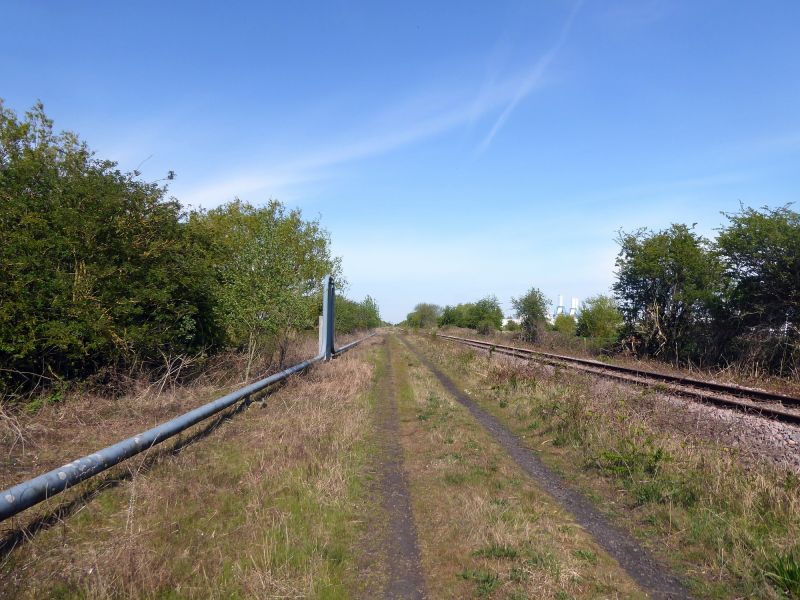Favorite Products For Railroad Ties Landscapings To Simplify Your Project
Explore practical and reliable products designed to make railroad ties landscaping straightforward and effective.
 Creating a durable and visually appealing landscape using railroad ties can add character and structure to outdoor spaces. Railroad ties are often chosen for their rugged appearance and longevity, making them suitable for various landscaping projects such as retaining walls, garden borders, steps, and raised beds. When selecting products for railroad tie landscaping, it's important to consider the materials, installation methods, and safety features to ensure a successful and lasting result.
Creating a durable and visually appealing landscape using railroad ties can add character and structure to outdoor spaces. Railroad ties are often chosen for their rugged appearance and longevity, making them suitable for various landscaping projects such as retaining walls, garden borders, steps, and raised beds. When selecting products for railroad tie landscaping, it's important to consider the materials, installation methods, and safety features to ensure a successful and lasting result.
Top Overall Option
Concrete Landscape Edging Blocks
Concrete landscape edging blocks are a versatile and durable choice for defining railroad tie borders and retaining walls. They offer a consistent appearance, easy installation, and resistance to weathering, making them suitable for long-term landscape projects. These blocks can be stacked or arranged in various patterns to create attractive and stable edges around garden beds, pathways, or tiered landscapes.
Types of Products For Railroad Ties Landscapings
Wooden Fasteners and Clips
Used to secure railroad ties together or to anchoring structures, ensuring stability in various configurations.
Concrete Retaining Wall Blocks
Heavy-duty blocks designed to support and contain soil, ideal for creating tiered landscapes or retaining walls.
Steel Anchors and Reinforcements
Metal components that help stabilize railroad ties and prevent shifting or settling over time.
Landscape Sealants and Coatings
Protective products used to seal wooden ties or concrete elements, extending their lifespan and preventing decay.
Drainage Gravel and Aggregates
Materials placed behind or beneath railroad ties to facilitate drainage and reduce soil erosion.
Decorative Gravel and Mulch
Finishing materials that enhance the aesthetic appeal of landscaped areas with railroad ties.
Landscape Edging Borders
Flexible or rigid borders that define garden beds and pathways alongside railroad ties.
Protective Rubber or Plastic Caps
Caps designed to cover sharp or rough edges of railroad ties for safety and appearance.
Soil Stabilizers and Geotextiles
Materials used beneath or around railroad ties to improve soil stability and prevent erosion.
Landscape Lighting Fixtures
Lighting options to highlight railroad tie features and improve nighttime visibility.
Edging Stakes and Anchors
Stakes used to secure landscape borders and prevent shifting over time.
Railroad Tie Stain or Paints
Coloring options available to customize the appearance of wooden railroad ties.
Drainage Pipes and Tubing
Components that facilitate water movement behind or beneath railroad ties to prevent pooling.
Planting Containers and Edging
Decorative containers and edging that complement railroad tie landscapes and add planting options.
Landscape Fabric
Geotextile fabrics used to prevent weed growth beneath railroad ties and maintain soil integrity.
Popular Choices
A common choice for defining borders and creating durable landscape features with railroad ties.
Popular for securing railroad ties and marking boundaries in garden projects.
Frequently used to reinforce and stabilize railroad ties in various landscape applications.
Often chosen to add visual interest and improve drainage around railroad ties.
Commonly applied to wooden ties to help protect against weathering and decay.
Widely used behind or beneath railroad ties to facilitate water movement and reduce erosion.
Flexible or rigid borders that help define landscaped areas alongside railroad ties.
Protective caps that cover sharp edges for safety and aesthetic purposes.
Used to prevent weed growth and maintain soil stability beneath railroad ties.
Lighting options to accentuate landscape features created with railroad ties.
Commonly used to secure railroad ties and landscape borders in place.
Popular for customizing wooden railroad ties and matching landscape themes.
Railroad ties can be used in multiple configurations to define boundaries or create functional features within a yard or garden. They are typically made from wood, concrete, or composite materials, each offering different benefits in terms of durability, weight, and appearance. Properly chosen accessories and finishing products can enhance the stability and aesthetic appeal of your railroad tie installations.
In addition to the ties themselves, there are various products designed to complement and secure railroad ties in place. These include fasteners, anchors, sealants, and protective coatings. Selecting the right combination of these products can help prevent shifting, decay, or damage over time, ensuring your landscape remains attractive and functional for years to come.
Whether you're aiming for a rustic look or a more refined appearance, understanding the available product options and considerations can help you plan a landscape that meets your needs and preferences. Careful selection and installation of appropriate products can make your railroad tie landscape both practical and visually engaging, transforming outdoor spaces into inviting and structured environments.
Key Buying Considerations
- Material durability and resistance to weathering or decay
- Compatibility with existing landscape elements and design style
- Ease of installation and required tools or hardware
- Weight and handling requirements for transportation and placement
- Safety features such as rounded edges or protective caps
- Drainage and water management capabilities
- Aesthetic preferences including color, texture, and finish
- Longevity and maintenance needs over time
- Environmental conditions of the site, such as moisture and soil type
- Availability of accessories like fasteners, anchors, and sealants
- Cost considerations and overall project budget
- Compatibility with planting and soil stabilization products
- Flexibility for future landscape modifications
- Local building codes or regulations that may apply
- Environmental impact of materials used
